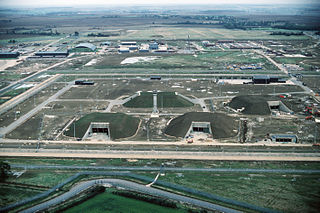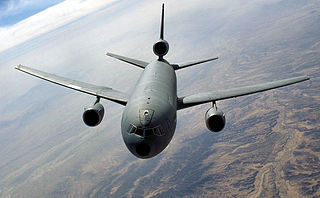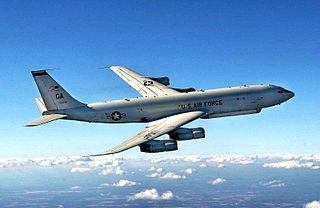This article needs additional citations for verification .(January 2017) |
"Jersey Bounce" is a song written by Tiny Bradshaw, Eddie Johnson, and Bobby Plater with lyrics by Buddy Feyne who used the pseudonym Robert B. Wright. [1]
This article needs additional citations for verification .(January 2017) |
"Jersey Bounce" is a song written by Tiny Bradshaw, Eddie Johnson, and Bobby Plater with lyrics by Buddy Feyne who used the pseudonym Robert B. Wright. [1]
It hit No. 1 for four weeks in 1942 as an instrumental recorded by Benny Goodman and his orchestra. [2] [3] It also charted that same year by Jimmy Dorsey (No. 9) and Shep Fields (No. 15). Versions of "Jersey Bounce" were performed by Glenn Miller, Harry James, Red Norvo, Jan Savitt, Ella Fitzgerald, Ella Mae Morse, and The King Sisters.

During World War II the title was popular as a nickname for aircraft. One of the first examples was a B-24D Liberator that served in the Eighth Air Force with the 93rd Bomb Group at Alconbury, England, in 1942 and 1943. It was the name of two B-17 Flying Fortress bombers in the 303rd Bomb Group stationed at Molesworth, England. After it was taken out of commission, the "Jersey Bounce 2" replaced it. At least four other Bombardment Groups had B-17 bombers named "Jersey Bounce". Assigned to the 91st Bomb Group, 324th Squadron (DF-H) at Bassingbourn, England, another B-17F (4124515) was named "Jersey Bounce", by pilot, Lt. Phillip Fischer, when the bomber was assigned to him in September 1942.
Another example was from the 336th Fighter Squadron of the 4th Fighter Group, where Lt. Col. Donald F. Pierini named all three of his P-51 (B,C, &D) fighters "Jersey Bounce". "Jersey Bounce I" was destroyed in a mid-air collision in 1944. "Jersey Bounce II" was retired after a number of missions. "Jersey Bounce III" was shot down in 1945 but under a different pilot. [4]
| External audio | |
|---|---|
Here on Archive.org |
The lyrics begin:
They call it the Jersey Bounce
A rhythm that really counts
The temperature always mounts
Whenever they play the funny rhythm they play
It started on Journal Square
And Somebody heard it there
They put it right on the air
And now you'll hear it everywhere...

Barksdale Air Force Base is a United States Air Force (USAF) base in Bossier Parish, Louisiana in northwest Louisiana. It is contiguous to Bossier City, Louisiana, along the base's western and northwestern edge. Barksdale AFB occupies more than 22,000 acres (89 km2) east of Bossier City and along the southern edge of Interstate 20. More than 15,000 active-duty and Air Force Reserve Command (AFRC) members serve at Barksdale.

Royal Air Force Molesworth or more simply RAF Molesworth is a Royal Air Force station located near Molesworth, Cambridgeshire, England with a history dating back to 1917.

Royal Air Force Polebrook or more simply RAF Polebrook is a former Royal Air Force station located 3.5 miles (5.6 km) east-south-east of Oundle, at Polebrook, Northamptonshire, England. The airfield was built on Rothschild estate land starting in August 1940.

Laon-Couvron Air Base is a former French and United States Air Force base in France. It is located in the Aisne département of France, less than one mile southeast of the village of Couvron and 6 miles northwest of Laon; on the southwest side of the Autoroute des Anglais 1 Mile (1.6 km) east of the village of Couvron-et-Aumencourt.

The Memphis Belle is a Boeing B-17F Flying Fortress used during the Second World War that inspired the making of two motion pictures: a 1944 documentary film, Memphis Belle: A Story of a Flying Fortress and the 1990 Hollywood feature film, Memphis Belle. It was one of the first United States Army Air Forces B-17 heavy bombers to complete 25 combat missions, after which the aircrew returned with the bomber to the United States to sell war bonds. In 2005 restoration began on the Memphis Belle at the National Museum of the United States Air Force at Wright-Patterson AFB in Dayton, Ohio where, since May 2018, it has been on display. The B-17 used in the 1990 feature film was most recently housed at the National Warplane Museum in Geneseo, New York but is currently undergoing extensive maintenance at the Palm Springs Air Museum in California.
A bombardment group or bomb group was a unit of organizational command and control group of the United States Army Air Forces (USAAF) during World War II. A bombardment group was normally commanded by a colonel. The table of allowances (TOA) for personnel, aircraft and equipment grew steadily over the course of the war doubling from 35 aircraft in 1941 to 72 in February, 1945. The aircrew end strength reached upwards to two crews per aircraft.

The 91st Bomb Group (Heavy) was an air combat unit of the United States Army Air Forces during the Second World War. Classified as a heavy bombardment group, the 91st operated B-17 Flying Fortress aircraft and was known unofficially as "The Ragged Irregulars" or as "Wray's Ragged Irregulars", after the commander who took the group to England. During its service in World War II the unit consisted of the 322nd, 323rd, 324th, and 401st Bomb Squadrons. The 91st Bomb Group is most noted as the unit in which the bomber Memphis Belle flew, and for having suffered the greatest number of losses of any heavy bomb group in World War II.

Royal Air Force Kimbolton or more simply RAF Kimbolton is a former Royal Air Force station located 8 miles (13 km) west of Huntingdon, Cambridgeshire, England.

The 322d Air Expeditionary Group is a provisional United States Air Force unit assigned to the United States Air Forces in Europe. As a provisional unit, it may be activated or inactivated at any time.

The 387th Air Expeditionary Group(387 AEG) is a provisional United States Air Force direct reporting unit at Ali Al Salem Air Base, Kuwait under United States Air Forces Central Command (USAFCENT). As a provisional unit, it may be activated or inactivated at any time. In 2016, the groups mission was to provide support for base operations, coordination with host nation partners, and administration of the Joint Expeditionary Tasked individual augmentees in the United States Central Command (USCENTCOM) area of responsibility.

The 449th Air Expeditionary Group is a provisional United States Air Force unit assigned to the Third Air Force supporting United States Africa Command. It is stationed at Camp Lemonnier, Djibouti. It flies missions for Africa Command and Combined Joint Task Force – Horn of Africa, supporting varied U.S. objectives in the area.

The 38th Bombardment Group is an inactive unit of the United States Air Force. It was most recently assigned as the operational (flying) component of the 38th Bombardment Wing, stationed at Laon-Couvron Air Base, France, where it was inactivated on 8 December 1957.

The 303rd Air Expeditionary Group is a provisional United States Air Force unit. In 2011, it was assigned to United States Air Forces Europe to activate or inactivate as needed.

The 305th Operations Group is a United States Air Force unit assigned to the 305th Air Mobility Wing. It is stationed at the McGuire AFB entity of Joint Base McGuire-Dix-Lakehurst, New Jersey.

The 481st Tactical Fighter Training Squadron is an inactive United States Air Force fighter squadron. Its last assignment was with the 27th Tactical Fighter Wing at Cannon Air Force Base, New Mexico, where it was inactivated on 8 July 1980.

The 364th Bombardment Squadron is an inactive United States Air Force unit. Its last assignment was with the 305th Bombardment Wing at Bunker Hill Air Force Base, Indiana, where it was inactivated on 1 January 1970. The squadron was first activated in March 1942. After training in the United States, it moved to England in the fall of 1942, where it participated in the strategic bombing campaign against Germany, earning a Distinguished Unit Citation for its actions. Following V-E Day, the squadron moved to Germany, where it formed part of the occupation forces until inactivating in December 1946.
This is a partial list of accidents and incidents involving the Boeing-designed B-17 Flying Fortress. Combat losses are not included except for a very few cases denoted by singular circumstances. A few documented drone attrition cases are also included.

The 116th Operations Group is a Georgia Air National Guard unit assigned to the 116th Air Control Wing. The unit is stationed at Robins Air Force Base, Georgia. The 116th Group controls all operational Northrop Grumman E-8C Joint STARS aircraft of the 116th Air Control Wing. It was activated in 1992, when the Air Force implemented the Objective Wing organization, and was successively equipped with the McDonnell Douglas F-15 Eagle and the Rockwell B-1 Lancer before converting to the E-8C in 2002.

Everett Ernest Blakely was a career officer of the United States Air Force. He was a highly decorated B-17 pilot with the “Bloody Hundredth” Bombardment Group of the 8th Air Force in Europe during World War II. He received eleven medals for his service including the Silver Star for “gallantry in action”, the Distinguished Flying Cross for “heroism or extraordinary achievement during aerial flight” and the Air Medal with 4 oak leaf clusters. Blakely and the crew of his plane “Just A Snappin” long held the record for the most enemy aircraft shot down on a single mission. The crew of Just A Snappin was credited with 9 enemy aircraft shot down. He also received his Pilot Wings with 3 stars from the Colombian Air Force.